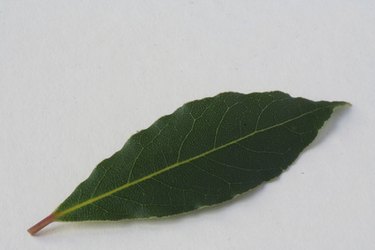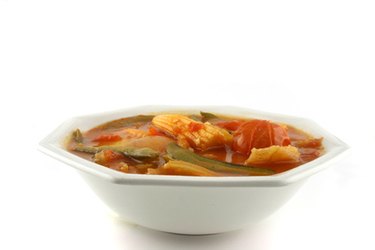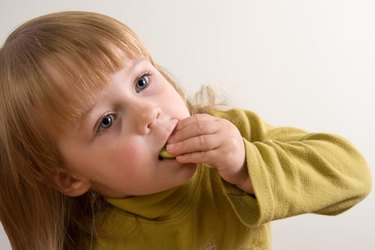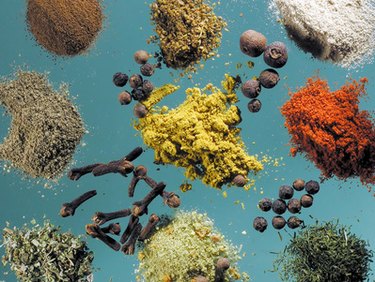
Bay leaves are commonly used in soups and stews, and they give a subtle, wholesome and earthy flavor to the soup. The oils of the bay leaf have also been part of herbal medicine for thousands of years, having been used to treat fungal, bacterial and viral infections. There are, however, some concerns about the health dangers of bay leaves. Most of these stem from concerns about eating large chunks of the leaf in soups and stews.
Using Whole Bay Leaves in Soup or Stew
Video of the Day

Bay leaves are best used for giving flavor to stew or soup, but should be removed after the stew or soup is cooked and just before serving. Contrary to popular opinion, the removal of the leaves isn't because they're poisonous (they're not), but because this makes the soup easier to eat--eating bay leaves, which have a strong, bitter flavor, can be an unpleasant experience. Therefore, using whole or half leaves when preparing soup or stew makes it easier to find the leaves and remove them before serving the dish.
Video of the Day
Eating Bay Leaves

Eating bay leaves is not only unpleasant, it can also be dangerous for the inside of your mouth. Bay leaves can splinter when stirred as part of a soup or stew. Since these leaves are thick and dry, the splinters can cut the inside of your mouth or throat. Bay leaves are also a choking hazard, especially for small children.
Using Ground Bay Leaves in Soup or Stew

One option for those who dislike removing bay leaves but love the flavor is to use ground bay leaves in soups. When the bay leaves are ground up, there's minimal danger involved in eating them. There are several products that contain only bay leaves or contain bay leaves and other flavorful spices for soups.